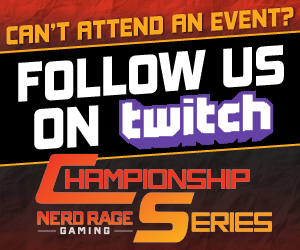Mat Bimonte: Good Rotations
It’s everyone’s favorite time of the year again! Spoiler season alongside a rotation!
Spoiler season alongside a rotation!
If you’ve followed me long enough, you know I can’t stand spoiler for many reasons, which you can find in my previous articles. However, rotation generally peaks my intention, as I start to lose interest in “lame duck” Standard formats.
Rotation is kind of an interesting time in Standard. A lot of new players aren’t used to blocks falling off, and even seasoned veterans are left scratching their heads for the first few weeks of a new format. While I’m no deckbuilding extraordinaire, I wanted to share with you a few tips I have leading into a rotation!
First, let’s start by looking at what is rotating out of Standard:
–Battle for Zendikar
–Oath of the Gatewatch
–Shadows over Innistrad
–Eldritch Moon
That is almost 1,000 cards being removed from Standard as we know it. So how do we digest all of this happening all at once?
Explore Existing Archetypes
To make this simpler, what current decks are hurt the least by a rotation. Mono Red Aggro is a pretty good place to start. Losing minimal cards allows this archetype to be at the top of my list to play for week one of a new format. While it’s already aggressive and powerful, there are almost certainly going to be a few upgrades available for this deck when Ixalan finally drops. Exploring whatever your deck is currently and understanding what will happen to it post-rotation is a skill you acquire over time.
Stay away from Control decks!
Control decks are very hard to build. Even in an established format they struggle. Imagine trying to build a deck blindly, not knowing what archetypes will be heavily represented, or what you need to be packing in your sideboard for those matchups. I’ve tricked myself into playing a control deck many times in Week 1, and have been guilty of playing a 10 card sideboard because I guessed incorrectly. Stick to something aggressive.
Look at New Mechanics
While fetchlands and Delve weren’t new mechanics, you should’ve been looking at them early based on power level alone. I always joke around, but WotC has really missed the ball on new mechanics they’ve introduced even just since I’ve started playing Magic.
been looking at them early based on power level alone. I always joke around, but WotC has really missed the ball on new mechanics they’ve introduced even just since I’ve started playing Magic.
-Delve
-Flip Cards
-Delirium
-ENERGY
-Vehicles
Be sure to look at new keywords, and find their mistakes.
Look at the Planeswalkers
Speaking of mistakes, one of the most egregious mistakes Magic has ever made was creating planeswalker cards. My eyes always go stare at them as soon as they are released. If you didn’t see Jace, Vryn’s Prodigy was going to be above average, you missed pretty badly. If you didn’t buy into the Gideon, Ally of Zendikar hype, you were just handicapping yourself. Be sure to look at where these powerful cards fit into archetypes, or if they allow new things to exist.
Find Powerful Cards
One of the first decks I helped build was the U/W Thopter Spy Network deck for SCG Chicago. Which was also the launch of Magic Origins. That deck contained 4x Hangarback Walker. Remember that card? Early in our testing we found that card to be one of the most powerful things to be doing in the set. I cashed in on ~75 of those bad boys at $1 a piece, spiking them to $15-20 a piece.
After we found that card, we found a way to build around it with our shell. There is always a decent card to build around in the set (Hi Heart of Kiran).
Find the “theme deck”
Does everyone see the carnage Zombies is inflicting on Standard currently? That is basically a pre-built theme deck. Those types of decks are fairly easy to find early in the format, so don’t think you haven’t found something powerful just because the card selection is fairly obvious.
I can’t stress enough that finding the obvious deck isn’t always the worst thing you can be doing. Finding something powerful and cohesive and refining it is always a great place to start.
Stick to the Basics
As I discussed above, don’t try and get too cute. Your control deck probably is poorly built, your mill deck probably isn’t powerful enough, your reanimator deck is probably going to get run over by the aggressive decks. In the words of Bud Kilmer, “stick to the basics”. Staying proactive and cohesive is the best advice I can give you. When everyone else is scrambling to put decks together, you can take solace in the fact that you will bury them by practicing your aggressively slanted deck.
Wrap Up
If you take nothing else from this article, just remember the bolded points. Analyzing new cards and new formats is incredibly difficult, and I usually recommend leaving it to the people at the Pro Tour. However, it’s incredible to try and find new things before they do. New formats are exciting, and so are new cards, so take advantage of rotation, because it only happens so often!
Thanks for stopping by,
Mat Bimonte
Mat Bimonte first picked up the game during Theros block, but already has a Modern 5K championship under his belt, as well as a number of smaller Standard tournament wins. Based out of Bloomington, Ill., Mat is a regular on the SCG Tour, with future aspirations of qualifying for the Pro Tour.



